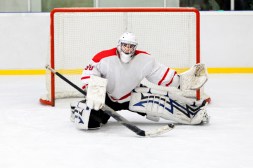Top 5 Most Common Hockey Penalties and How to Avoid Them on the Ice
Hockey is an intense and fast-paced sport that requires skill, strategy, and discipline. While players strive to showcase their talents on the ice, they must also navigate the rules of the game to avoid penalties. Understanding common hockey penalties can help players stay in the action and contribute positively to their team. In this article, we’ll explore the top five most common hockey penalties and provide tips on how to avoid them.
Tripping
Tripping occurs when a player uses their stick or body to cause an opponent to fall, usually by hooking their skate or leg. This penalty results in a two-minute minor infraction. To avoid tripping, players should focus on maintaining proper positioning and using their body effectively without resorting to illegal tactics.

Slashing
Slashing involves swinging a stick at an opponent with intent, often resulting in injury or disruption of play. This penalty can vary from a two-minute minor for light slashes to a more severe major penalty for aggressive behavior. Players can prevent slashing by keeping their sticks down and ensuring they engage opponents legally using body checks instead.
Holding
Holding is called when a player restricts an opponent’s movement with either hands or arms while trying to gain control of the puck or impede progress up the ice. A two-minute minor penalty is given for this infraction. To avoid holding, players should focus on maintaining balance and use proper skating techniques rather than grabbing onto opponents during play.
Interference
Interference occurs when a player impedes an opponent who does not have possession of the puck, disrupting gameplay unfairly. This results in a two-minute minor penalty as well. To steer clear of interference calls, players should be aware of puck locations and move responsibly without obstructing other players unnecessarily.
Cross-Checking
Cross-checking happens when a player uses their stick horizontally against an opposing player’s body with both hands on it—a move often used aggressively during physical confrontations but deemed illegal by referees if done excessively or carelessly leading to injuries or unfair advantage taken by one team over another . It usually carries either 2 minutes minor depending severity , so being mindful about how you engage opponents will keep you out trouble . Always remember keeping hands apart may help reduce risk from getting penalized further.
By understanding these five common hockey penalties—tripping, slashing, holding, interference, and cross-checking—players can develop better habits on the ice that not only enhance their gameplay but also keep them out of the penalty box. Awareness of these rules allows athletes at all levels enjoy playing while minimizing risks associated with unnecessary infractions.
This text was generated using a large language model, and select text has been reviewed and moderated for purposes such as readability.











